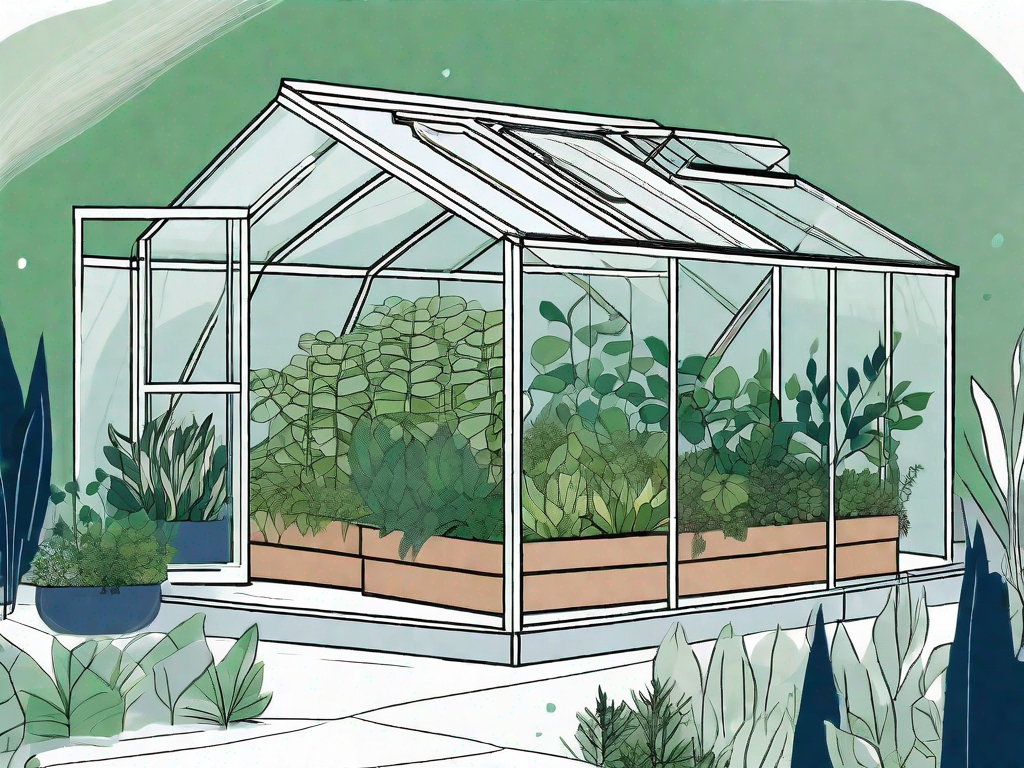Having a beautiful and thriving garden is a joy for any gardener. However, pesky pests can quickly turn that joy into frustration. To maintain a healthy garden, it is crucial to identify and control common garden pests effectively. In this article, we will guide you on how to identify garden pests, explore natural and chemical control methods, and discuss preventive measures to keep these unwanted visitors at bay.
Understanding Garden Pests
Garden pests are insects, rodents, or other animals that damage plants and hinder their growth. They can be categorized into different species, each with its own distinctive characteristics and habits.
When it comes to maintaining a healthy garden, understanding garden pests is crucial. These pesky creatures can wreak havoc on your plants, causing stunted growth, leaf damage, and even death in severe cases. By familiarizing yourself with the various types of pests that can infest your garden, you can take proactive measures to protect your plants and ensure their well-being.
The Importance of Pest Identification
Knowing the specific pests that are causing damage in your garden is vital. Different pests require different control methods, and misdiagnosis can lead to ineffective treatments. Take the time to observe and identify the pests present in your garden.
Identifying garden pests can be a challenging task, but it is well worth the effort. By accurately identifying the culprits behind your plant woes, you can implement targeted pest control strategies that will effectively combat the problem. Whether it’s aphids, slugs, or caterpillars, understanding the specific characteristics and habits of each pest will enable you to choose the most appropriate and environmentally friendly methods to eliminate them.
Common Types of Garden Pests
Garden pests come in various shapes, sizes, and species. Some of the common pests you may encounter include aphids, slugs, snails, caterpillars, whiteflies, and spider mites, among others. Each pest has its own unique effects on plants.
Aphids, for example, are tiny insects that feed on the sap of plants. They can quickly multiply and infest your garden, causing leaves to curl and become distorted. Slugs and snails, on the other hand, are notorious for their voracious appetites. These slimy creatures can devour entire seedlings overnight, leaving behind a trail of destruction.
Caterpillars, with their insatiable hunger, can quickly strip plants of their leaves, leaving them weak and vulnerable. Whiteflies, on the other hand, are small, flying insects that suck the sap from plants, causing them to wilt and become discolored. Spider mites, too small to be seen with the naked eye, can infest plants and spin fine webs, which can eventually lead to the death of the affected foliage.
Understanding the specific effects that each pest has on plants is essential for effective pest management. By knowing what signs to look for and which pests are likely to be causing the damage, you can take appropriate action to protect your garden from further harm.
Steps to Identifying Garden Pests
Identifying garden pests involves careful observation and understanding of their behavior. Here are some steps to help you in the identification process:
Observing Plant Damage
Pay close attention to the type and pattern of damage on your plants. Look for holes in leaves, chewed stems, wilting, discoloration, or stunted growth. By analyzing the damage, you can narrow down the list of potential culprits.
Spotting Pests Directly
Take the time to inspect your plants thoroughly. Look under leaves, on stems, and at the base of plants for signs of pests. Some pests, like aphids or caterpillars, may be easily visible upon close examination.
Using Pest Traps
Strategically placing traps in your garden can help you identify and monitor pest populations. Sticky traps, pheromone traps, or even handmade traps using simple materials can lure and catch pests, providing valuable information for identification purposes.
Natural Pest Control Methods
Controlling garden pests using natural methods is not only environmentally friendly but also safe for beneficial insects and animals. Here are a few natural approaches you can take:
Beneficial Insects and Animals
Encourage beneficial insects and animals to visit your garden. Ladybugs, lacewings, and birds are natural predators that can help control pest populations. Planting flowers, herbs, and providing shelters will attract these helpful creatures.
Homemade Organic Pesticides
Make your own organic pesticides using commonly available ingredients like neem oil, garlic, or vinegar. These natural concoctions can help deter and control pests effectively while minimizing harm to beneficial organisms and the environment.
Companion Planting for Pest Control
Some plants have natural repellent properties that can deter pests. By strategically interplanting pest-repelling plants with vulnerable ones, you can create a natural barrier against unwanted visitors. For example, planting marigolds around tomatoes can fend off aphids.
Chemical Pest Control Methods
In situations where natural methods may not be sufficient, chemical pesticides can provide effective pest control. However, it is crucial to use them responsibly and minimize their impact on the environment:
Understanding Pesticides
Educate yourself about the various types of pesticides available and their specific uses. Different pests require different pesticides, so choosing the right one is essential. Follow the instructions carefully and use pesticides only as directed.
Safe Use of Chemical Pesticides
When using chemical pesticides, take precautions to protect yourself, other organisms, and the environment. Wear protective clothing, utilize proper application techniques, and avoid using pesticides near water sources or when pollinators are active.
Preventing Future Pest Infestations
Prevention plays a crucial role in maintaining a healthy garden. By implementing preventive measures, you can reduce the risk of future pest infestations:
Regular Garden Maintenance
Regularly inspect your plants for signs of pests or diseases. Remove any diseased or damaged plant material promptly. Prune crowded foliage to improve air circulation, as it can help deter certain pests.
Creating a Balanced Garden Ecosystem
Encourage biodiversity in your garden by planting a variety of flowers, herbs, and shrubs. This diversity attracts beneficial insects and animals that prey on garden pests, creating a balanced ecosystem that naturally controls pest populations.
Seasonal Pest Prevention Tips
Learn about pests’ life cycles and their peak activity periods. Implement targeted preventive measures during these times. For instance, covering vulnerable plants with netting during specific seasons can prevent pest infestations.
By following these steps, you can successfully identify and control common garden pests. Remember, knowledge and observation are key. Embrace natural pest control methods whenever possible, and resort to chemical options only when necessary. With perseverance and care, you can enjoy a bountiful garden throughout the year.



